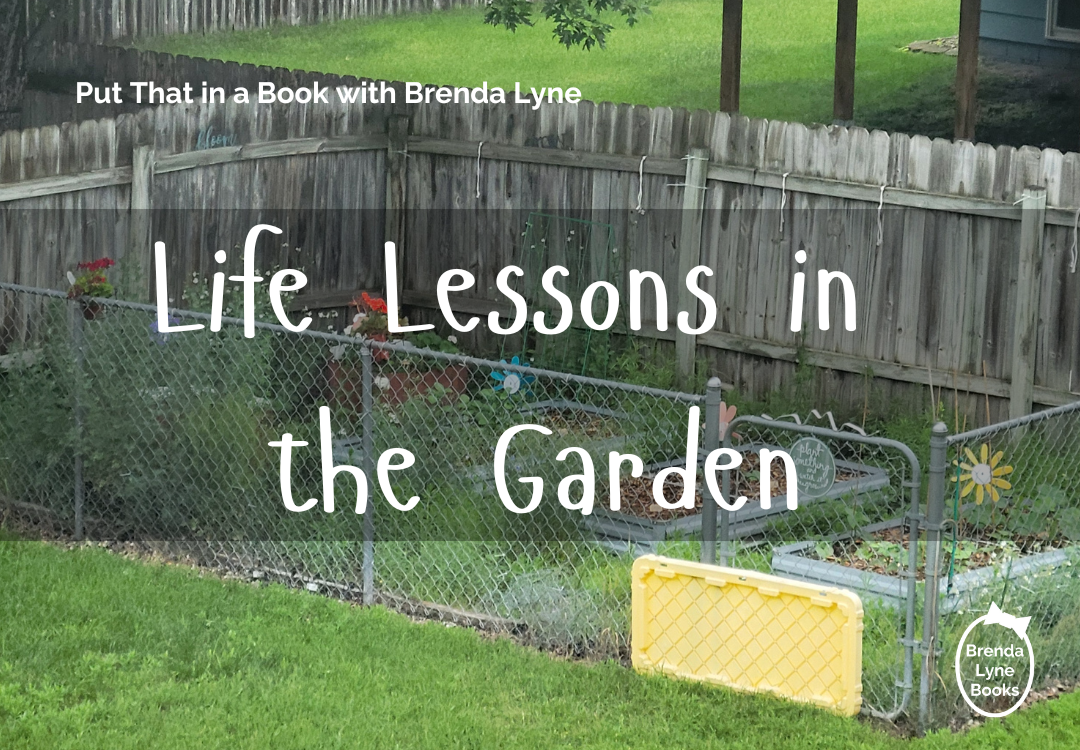
Life Lessons in the Garden
Share
Every spring for the past fifteen years or so, I’ve gotten the crazy notion in my head that I should plant some seeds and grow some stuff. Edible stuff. Vegetables, mostly. There’s something about planting a seed and helping it grow that is infinitely satisfying. Writing mystery & thriller novels is my first passion; gardening is my second.

Any gardener will tell you that creating the ideal conditions for growing vegetables is very much a trial-and-error process. I’ve tried growing vegetables in large in-ground gardens, in garden boxes, in storage totes, in flower boxes, even in Home Depot buckets. Hell, I’ve even used pallets (that was a Pinterest-inspired mistake, although it looked really cool). A gardener could -- and often does -- spend oodles of time and money finding inventive ways to protect their garden from natural enemies like hail, frost, bugs (one year the Japanese beetles decimated my green beans; ask me how happy I was about that), rabbits, deer, chipmunks, and all the types of mold and fungi that can keep your plants from growing well.

But the gardener’s #1 enemy? WEEDS. Oh my god, the weeds. These invasive plants are prolific, they are pernicious, I don’t know where they all come from and they are damn near impossible to control. I don’t care how much mulch you use. But control them we must, or they will steal light and nutrients from the legitimate plants and take over your garden — and then the world. At least, that’s the conventional way of thinking and the battle I’ve been fighting for entirely too long.
There has to be a better way. There just has to.
Last year I decided to conduct a little experiment: what if I could figure out a way to make it so my vegetable plants could live in harmony with the plants that we call weeds?

I have a good-sized garden plot in my backyard, and last year I decided I would plant vegetables in raised beds and spread wildflower seeds on the ground throughout the rest of the garden. I would keep the veggie beds weed-free, but let everything else grow as it may. I thought it would give the garden kind of a fun wild jungle aesthetic, and Lord knew it would be less work for me (less time weeding = more time writing books). Another bonus to this plan: wildflowers attract pollinators, which gardens need to thrive.
So that’s what I did. I had limited success the last two years because of extremely dry conditions. I was very sad. A gardener, much like a farmer, never knows what they’re going to get when it comes to weather.

This year Mother Nature is apologizing profusely and making sure Minnesota gets more than its fair share of rain. It’s a whole different ballgame. The entire garden is thriving. Everything is living and growing together in harmony, just like I’d hoped. The wildflowers are blooming, and it turns out that some of the weeds have flowers too. My garden is a beautiful, wild place and it makes me happy — more than it ever has in fifteen years of doing this.
That got me thinking: maybe weeds are not really evil, just misunderstood. They’re just trying to survive like everyone else.
I’m sure there’s a life lesson in here somewhere. If I had to pick one, it would be this: when something in your life looks like a weed, don’t yank it and throw it away just yet. If you give it a chance, it might reward you with a really pretty flower.

